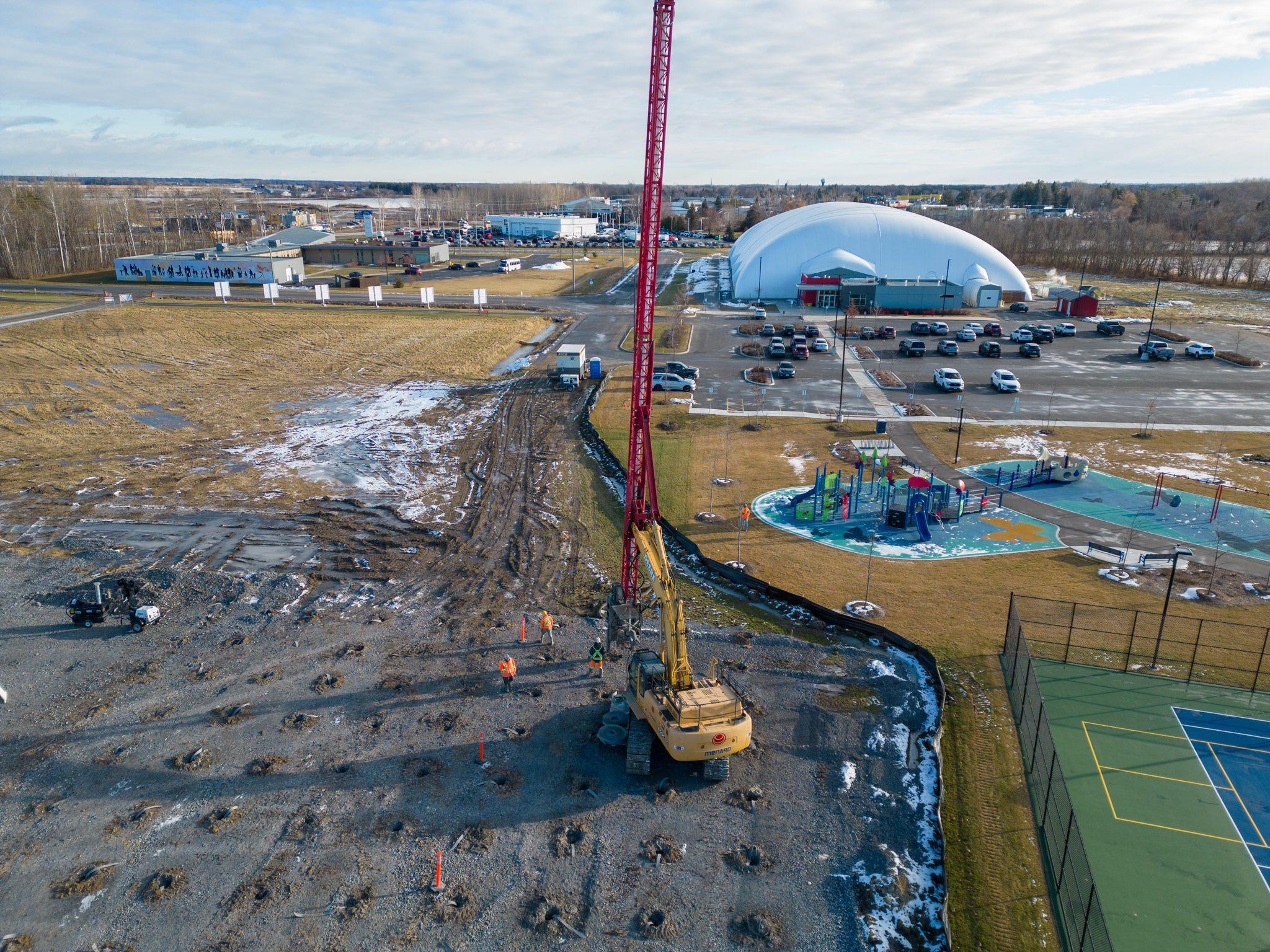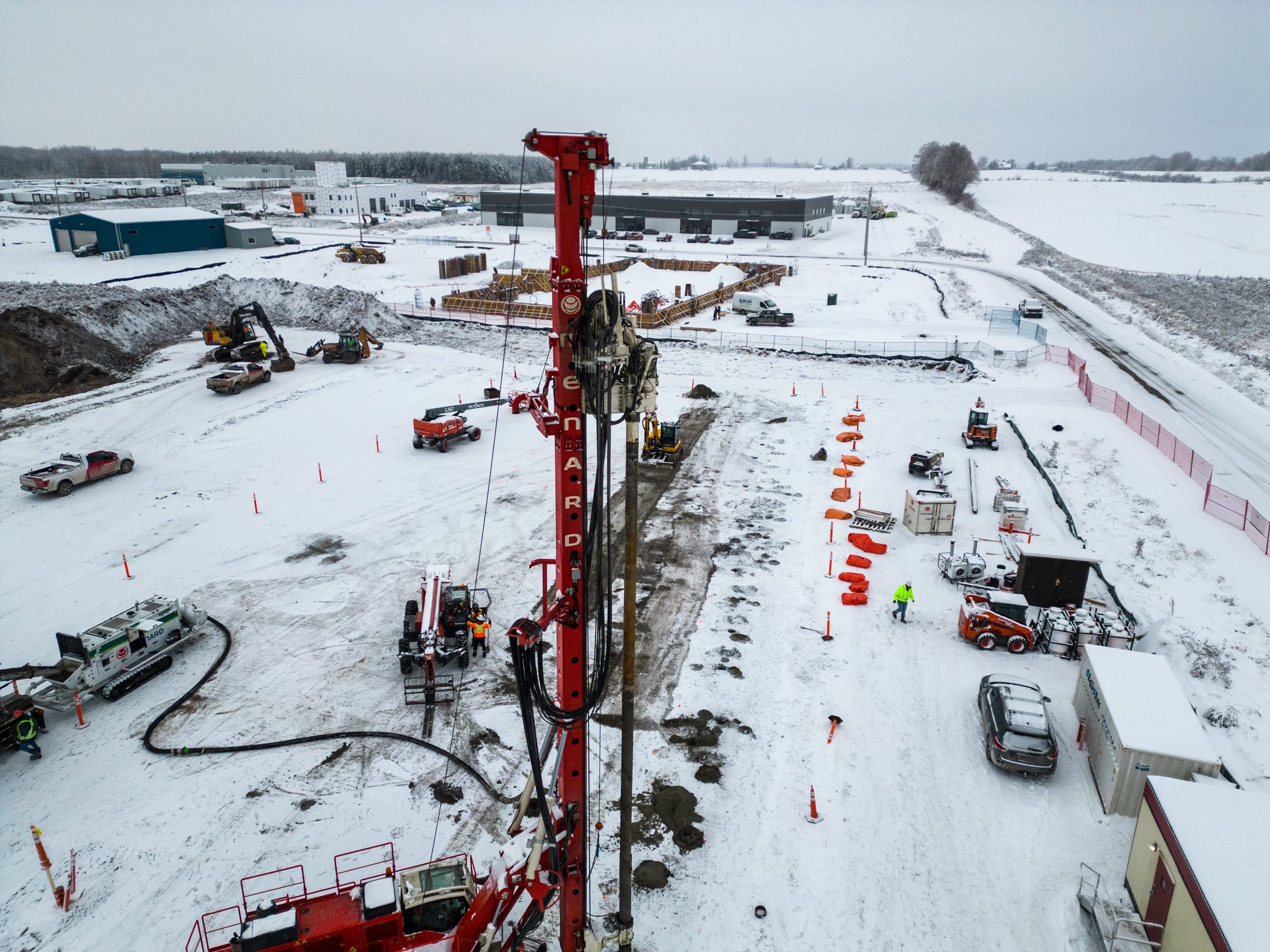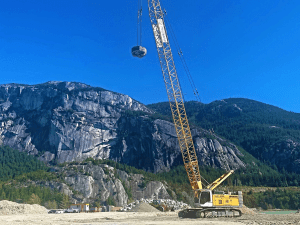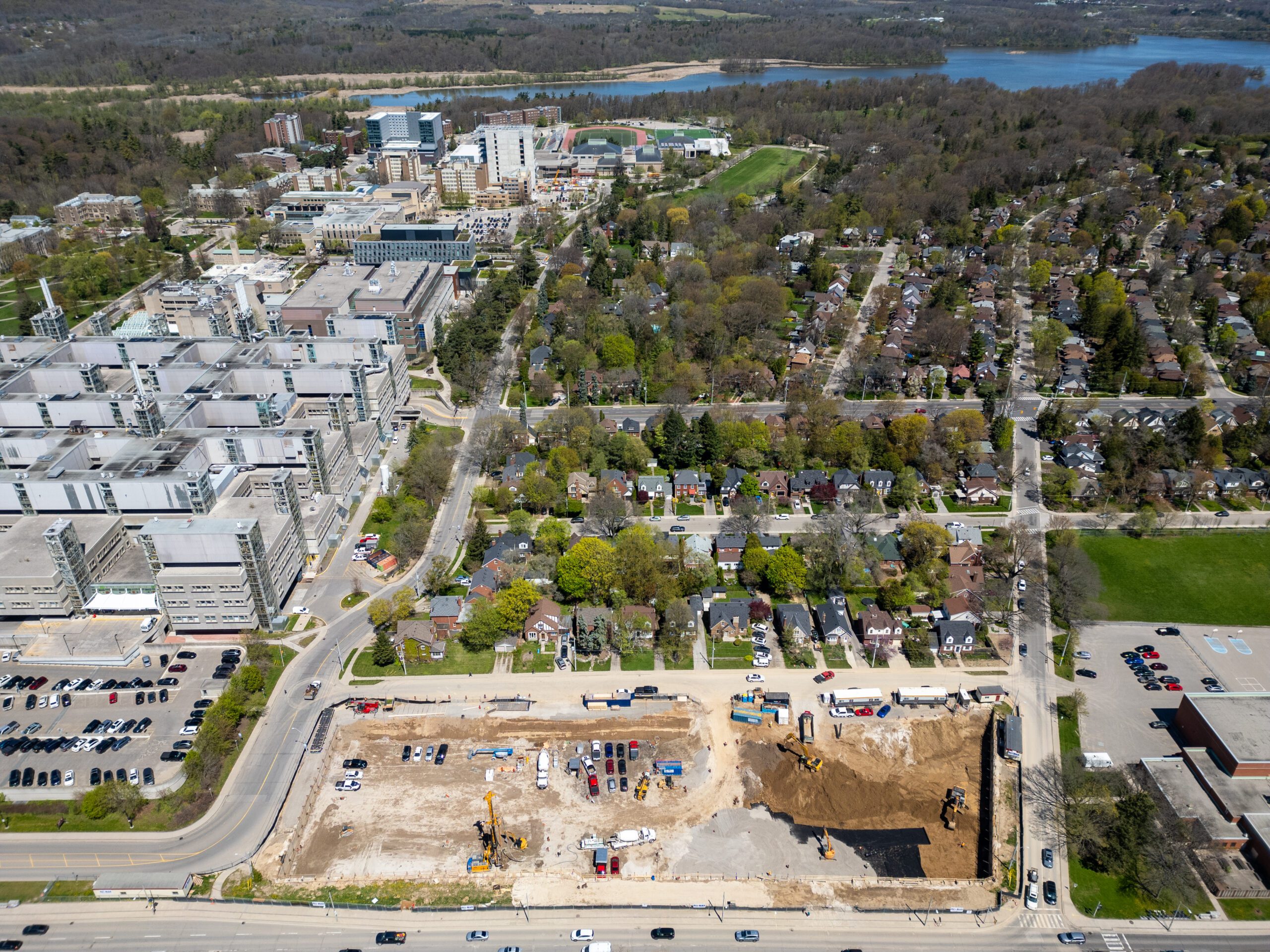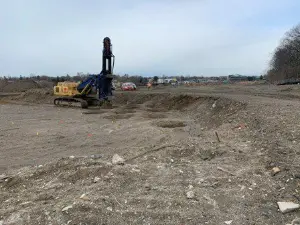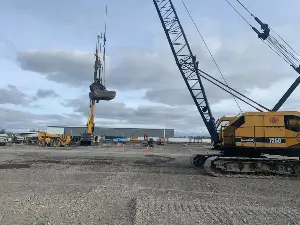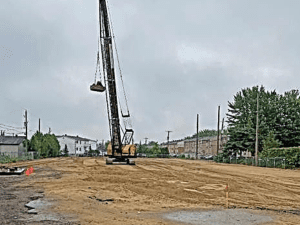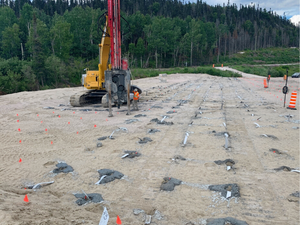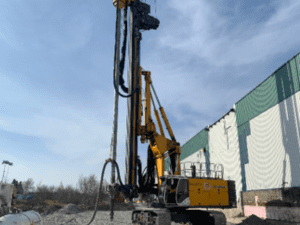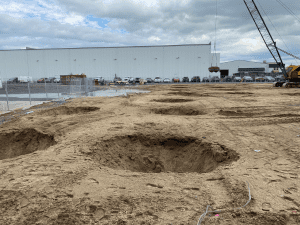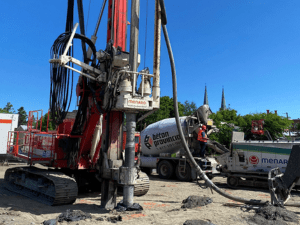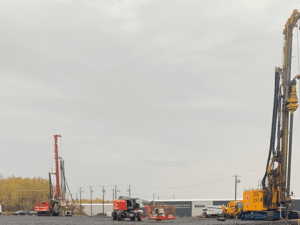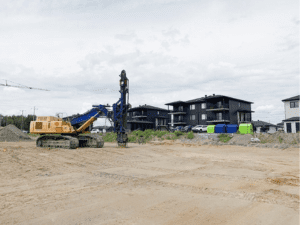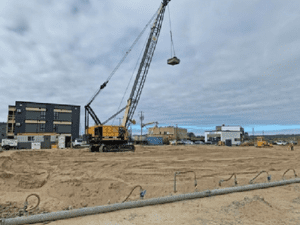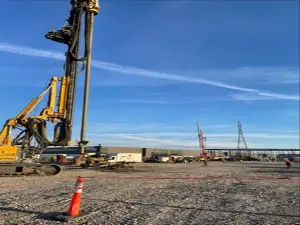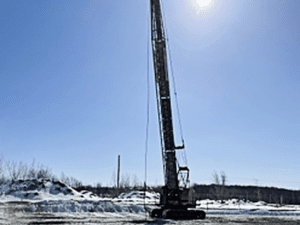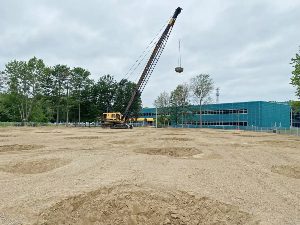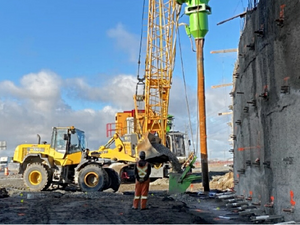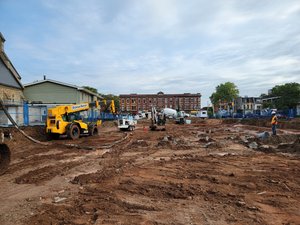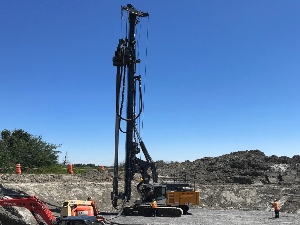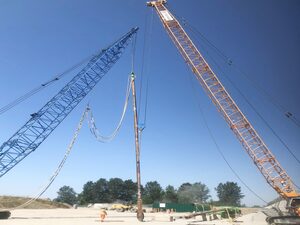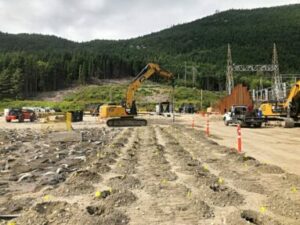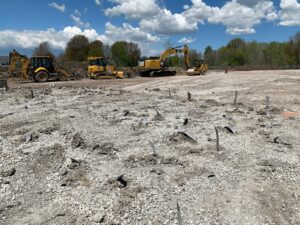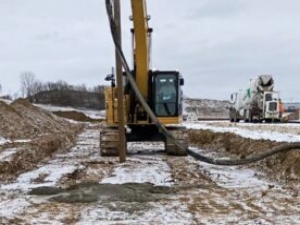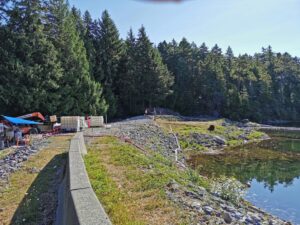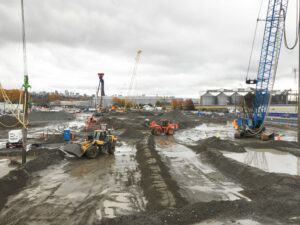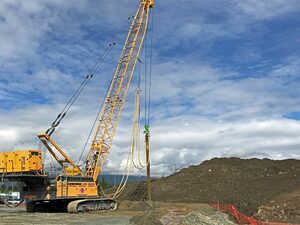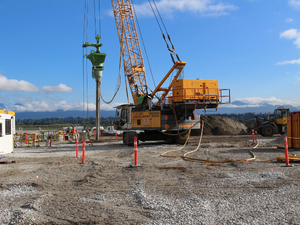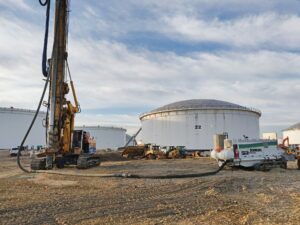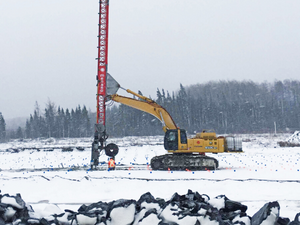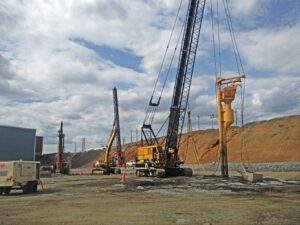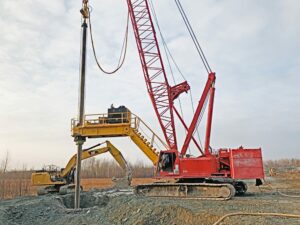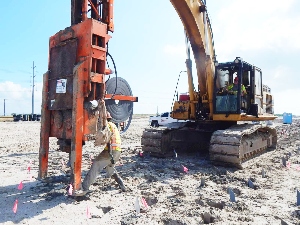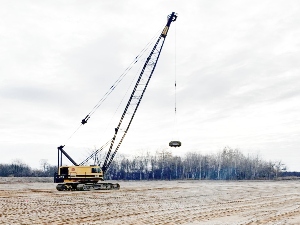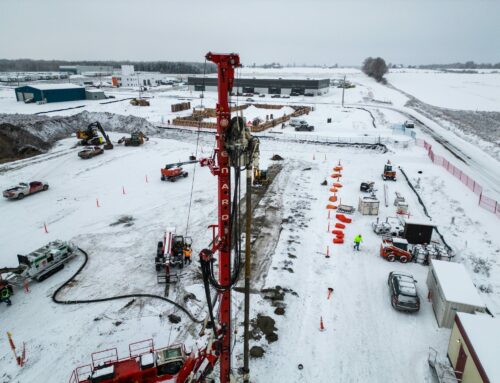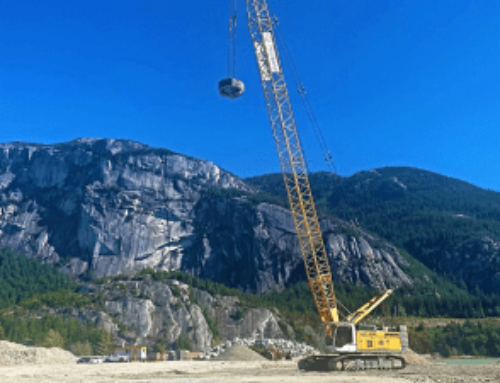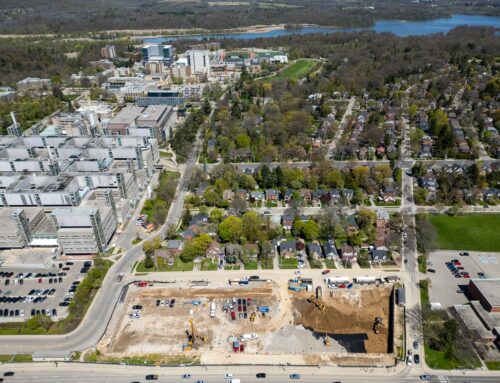Selected Technique:
Dynamic Compaction
Project Area:
11 300 m²
Pomerleau contacted Menard Canada to improve the soil to a depth of +- 8m, located under the future National Center for Verification and Recovery, a 4-storey building located in Shawinigan, Quebec.
Ground Conditions
The geotechnical data extracted from the drilling reports indicated that throughout the site, the following soil profile was identified:
- A natural granular horizon composed of sand with traces of Silt to a depth of between 6.5 and 7.2m from the level of the natural terrain
- A deposit of Silt to a depth of + 9m compared to the level of the natural ground
- A varved deposit (mixture of Silt and Sand with clay strata) to a depth of + 22m compared to the level of the natural terrain
- A clayey deposit beyond depths of approximately 50m according to the Cone Penetration Tests (CPTs carried out in the geotechnical study

Dynamic Compaction, Shawinigan Québec
Menard Canada Solution
To eliminate the potential for soil liquefaction present up to 5m deep and to guarantee a bearing capacity varying between 100 and 200 kPa depending on the size of the foundations, Menard Canada proposed that the technique of high-energy Dynamic Compaction to a depth of +- 8m using a mass of around 18 tonnes should be used. After producing a 30mx30m test board and demonstrating that the criteria had been met, the work was applied to the entire treatment area. A control test campaign, including standard penetration tests (SPT), Cone Penetration Tests (CPT), as well as Pressuremeter Tests (PMT), made it possible to validate the achievement of the performance criteria as well as the non-reworking of the underlying soils.

